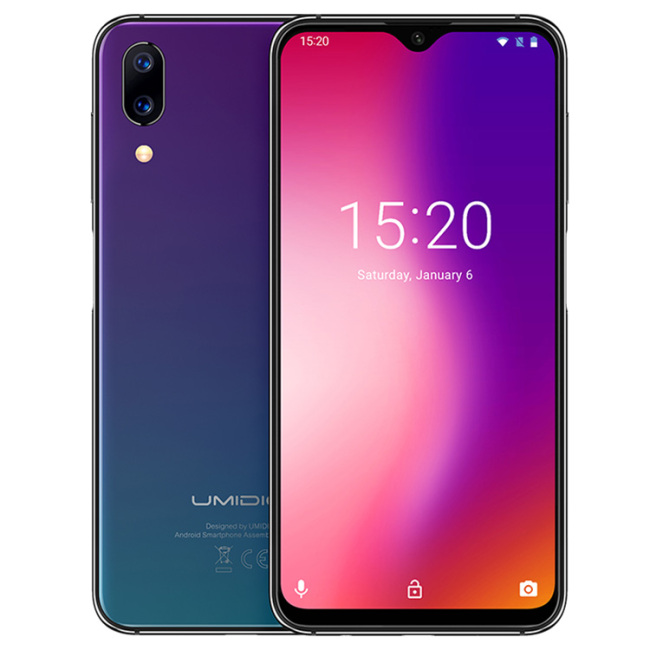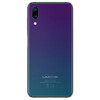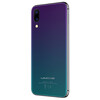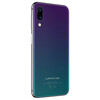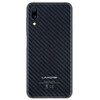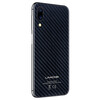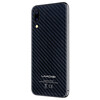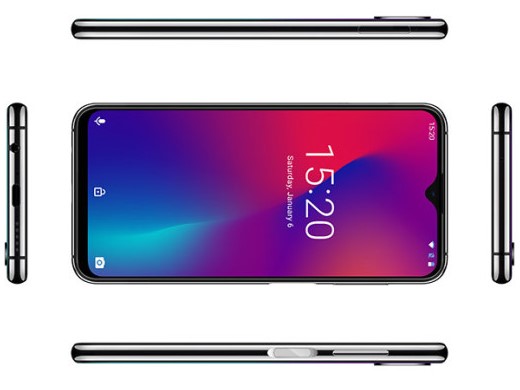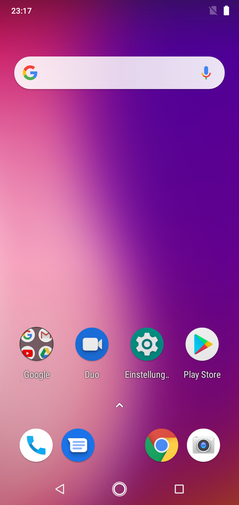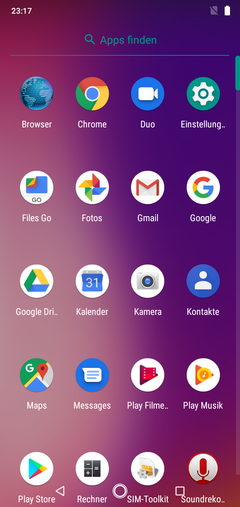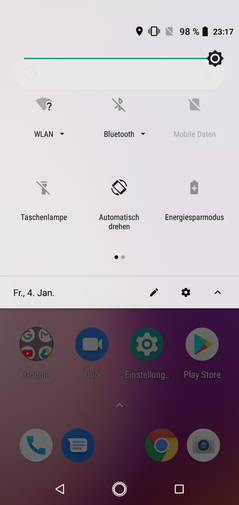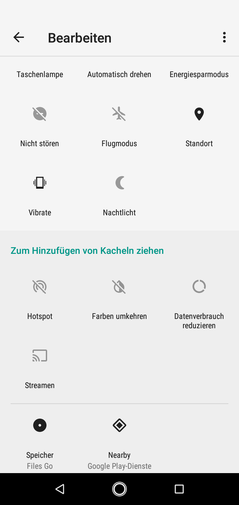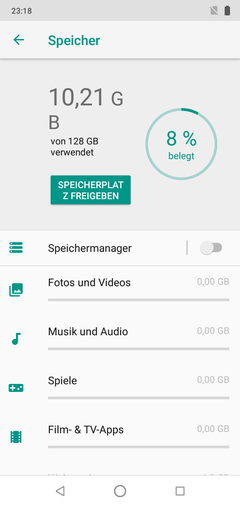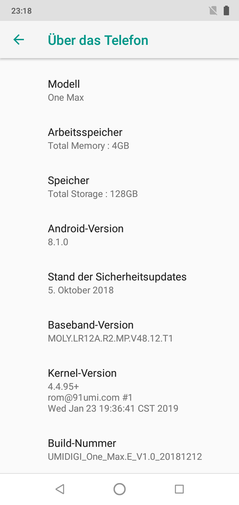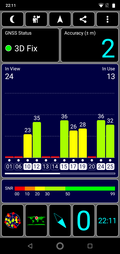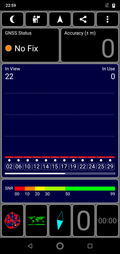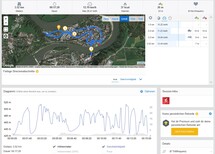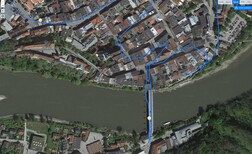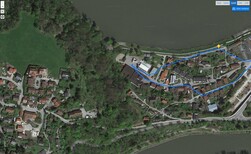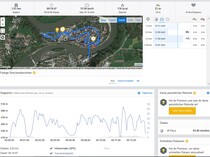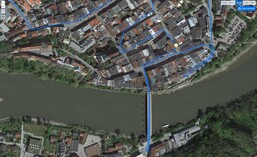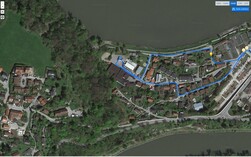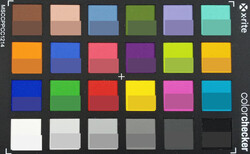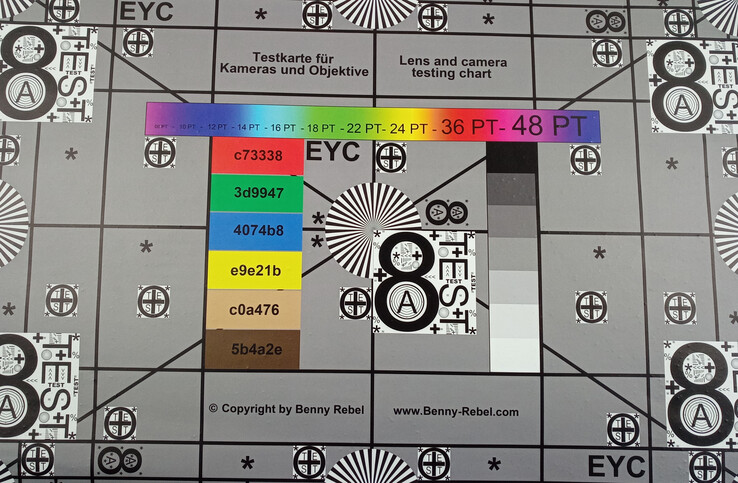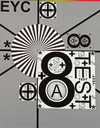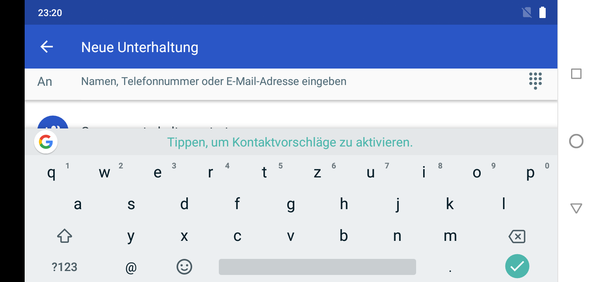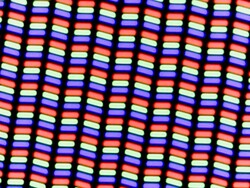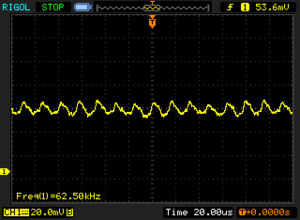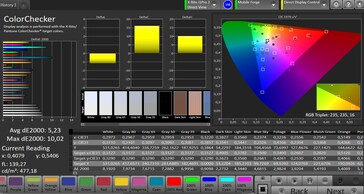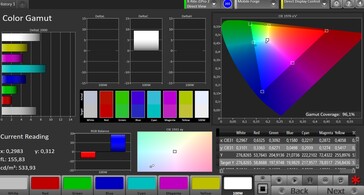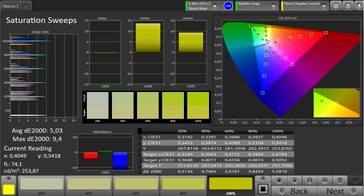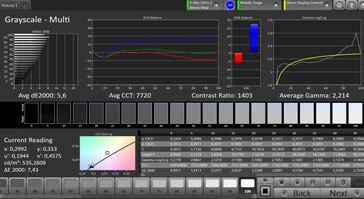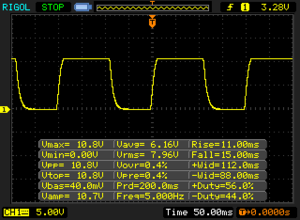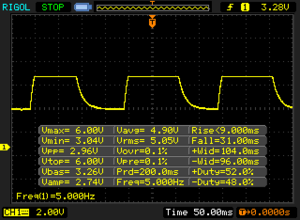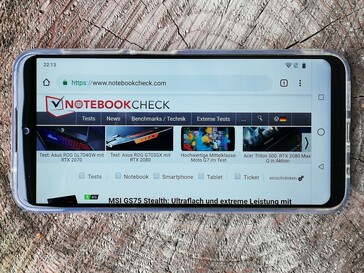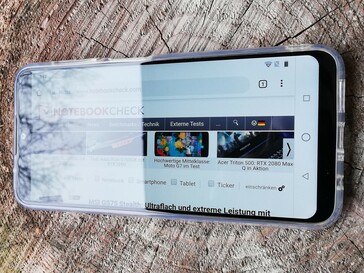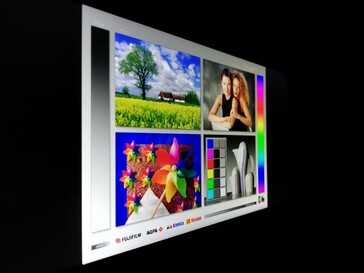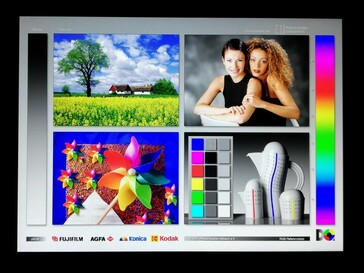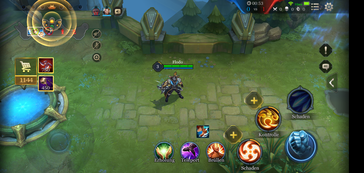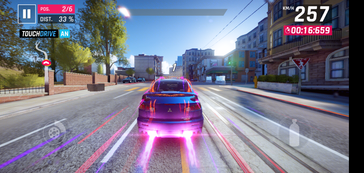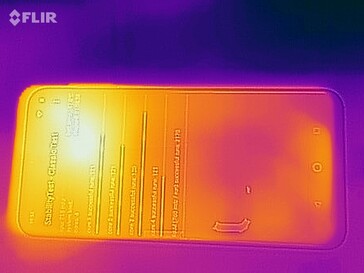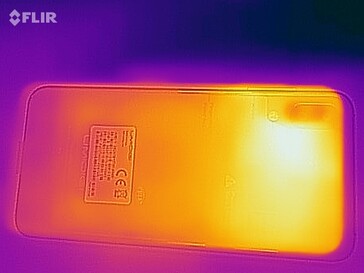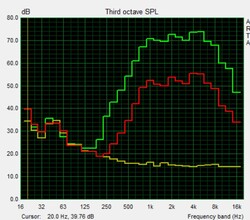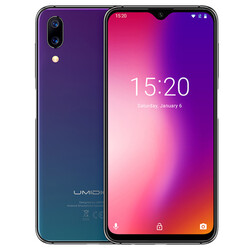Umidigi One Max Smartphone Review
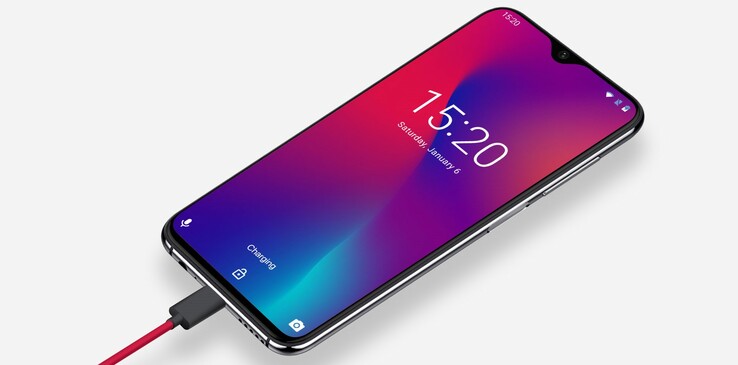
Previous phones from Umidigi reviewed by us over the last year or so have achieved solid results. The Umidigi models Z2, Z2 Pro, S2 Lite and A1 Pro impressed with their pure Android experience, satisfactory performance and bright screens. Negatives included occasionally high battery consumption and occasional sensor issues. Every device, even if they had the odd caveat or minor issue, was able to achieve a recommendation from us.
On the bench today is a smartphone serving the middle price point of the market, equipped with a Mediatek Helio P23 MT6763V SoC - Benchmarks and SpecsMediatek Helio P23 MT6763V with ARM Mali-G71-MP2 GPU, 4GB of RAM and 128GB of internal storage - comparable to other devices in this market segment in general, however the internal storage size is generous and above that usually offered by the competition at this price point. The large 6.3" screen is also a plus point for the One Max. It is clear that Umidigi wants to take it to the competition with this spec list, and on paper at least, things look promising.
In this price segment however, at around 200 Euros (~$227), the One Max definitely does not have things to itself, with the field being reasonably packed with similarly specified competing phones. For this test, we have selected as competition the Huawei P Smart Plus, HTC's U12 Life, the Xiaomi Redmi Note 6 Pro and the Asus Zenfone 5 ZE620KL for comparison.
Construction - Solid and well-made
The Umidigi One Max has a metal frame around the phone with a glass back panel, which on our received test unit was the 'Twilight' colour option, but it is also available in a faux-carbon fibre option. In contrast to most smartphones available today, it has a fingerprint sensor on the side of the phone. The rear of the phone is elegant and simple, with the dual camera and LED flash nicely placed in the top left corner.
The dimensions of the One Max are on par with other phones with a comparable screen size (in this case, 6.3"). The weight, however, is somewhat higher than other phones in this category and price class.
Specification - An Android Phone with Large Storage Capacity
The mid-range Mediatek Helio P23 MT6763V with ARM Mali-G71-MP2 GPU coupled with 4GB of RAM provides for a smooth user experience. Handling the graphics side of things as mentioned is the ARM-Mali G71 MP2 GPU, and rounding things off is 128GB of internal storage - offering plenty of space for installation of apps and storage of personal documents and media. Umidigi have also fitted the Max One with a microSD slot capable of expanding storage by up to 256GB, although utilising the microSD slot means that the second Nano-SIM slot is no longer accessible. Anyone looking to utilise dual SIMs will be happy to note that both support LTE connectivity. VoLTE and VoWLAN are also supported, provided that the carrier offers this functionality and supports the Umidigi One Max.
Looking now at physical data connectivity, the phone is equipped with a USB Type-C port - however it only supports the USB 2.0 standard. However, OTG functions such as charging another device, are supported. Moving on, the phone also sports a 3.5mm headphone jack, for connecting a headset or external speakers. DRM management is limited to Level 3, so some HD content cannot be displayed, such as found on Netflix, Amazon Prime etc. but instead are limited to playback in SD formats.
Software - Pure Android Oreo
The One Max comes with a pure Android 8.1 Oreo installation, with a security patch level from the 5th October 2018. As of date and time of testing, the only update available was an update with bug fixes and improvements to system stability.
Umidigi have refrained from installing any of their own apps or other bloatware above and beyond what is included with Android, giving users full control over the content of their phone. User-installed apps cannot be installed on an inserted microSD card - instead it is limited to use as expanded storage for photos, videos and other personal files.
Communication and GPS - Umidigi One Max with NFC and Dual LTE.
The Umidigi One Max features connectivity in the GSM, 3G and LTE networks. LTE connectivity is possible to category 7, which offers upload rates of up to 100Mbit/s and download rates of up to 300Mbit/s. In addition, multiple bands are supported, which will allow for connectivity in pretty much any country you may travel to.
For short range communication, the phone is equipped with NFC, Bluetooth 4.1 and WLAN. Wireless LAN supported standards are 802.11 a, b, g and n, and 5Ghz networks are also supported, however the higher speeds offered by 802.11 ac networks are out of reach for this phone, as the standard is not supported. In our WLAN test the measured speeds did not impress as a result of this lack of 802.11 ac support. It's downstream speed result of 63.3 Mbit/s puts it ahead of the Huawei P Smart Plus, however its upstream speed result of 48.1 Mbit/s puts it right at the bottom of the pack.
| Networking | |
| iperf3 transmit AX12 | |
| Asus Zenfone 5 ZE620KL | |
| Xiaomi Redmi Note 6 Pro | |
| HTC U12 Life | |
| Huawei P Smart Plus | |
| Umidigi One Max | |
| iperf3 receive AX12 | |
| Xiaomi Redmi Note 6 Pro | |
| Asus Zenfone 5 ZE620KL | |
| HTC U12 Life | |
| Umidigi One Max | |
| Huawei P Smart Plus | |
With the app 'GPS Test' we tested how well the Umidigi One Max is able to localise it's position. Our results showed that it is able to offer positioning with a 2 meter (~6.5 ft) margin of error, however in an indoors environment, no GPS satellite connectivity was possible at all.
On our compulsory bike ride tour route, the Umidigi was put up against our reference navigation device - the Garmin Edge 520. The displayed route was frequently shown as being off to the side of the actual path, and the Android smartphone was actually drawing the GPS signal path behind its actual location. This resulted in curved paths taken being drawn as cut-across lines, and sudden changes in direction being drawn as long bends. In spite of what appears at first to be high GPS accuracy, the Umidigi One Max is therefore only suited for basic navigational use.
Phone-functions and Voice Quality - China smartphone with good call quality.
For phone calls the Umidigi One Max offers users the standard Android app. This offers quick access to a keypad as well as access to recent incoming and outgoing calls, plus own contacts at the top. In voice conversations, the phone impressed with decent suppression of background noise, however at its highest volume level, the earpiece was no longer able to deliver clear voice quality. In quieter environments however, the quality of the earpiece provides acceptable quality in order to allow for understandable phone conversations.
Cameras - Suitable for snapshots
The main camera unit is capable of taking panorama photos, however the colours are somewhat washed-out. Large differences in brightness are handled well by the camera, however, with darker areas in the pictures not suffering from black patches. Objects in the picture are well differentiated from one another and problems with blurriness only rear their head at high zoom levels. In more close-up shots, subjects are captured with good sharpness, however they are slightly lacking saturation. Edges of objects are well-defined and fine details and structure are well preserved. As with the panaromic shots, visible problems with blur only occur at higher zoom levels. In low-light conditions, it is possible to identify what has been photographed, however colour reproduction is unacceptable and towards the edges of the image pretty much nothing is recognisable. In the rear camera settings, it is possible to activiate HDR mode as well as apply various colour filters, plus change the quality of the capture mode with three preprogrammed options. In addition to this, parameters such as sharpness, contrast, brightness, saturation and colour temperature can be adjusted with three levels for each - low, medium and high.
The video capture experience with the phone provided results similar to those in our photo testing. Here also it is possible to apply colour filters over the video output as well as choose between three different themes to apply. In the settings menu, additional options are present in the form of scene selection such as night, party, beach and many more. The video recording quality levels are limited to FHD, HD, VGA and CIF. Modes for slow-motion video capture or similar are not present.
With the ColorChecker-Passport we test how well the camera on the Umidigi One Max is able to reproduce colours. The results showed that the captured photos were too bright, and darker grey tones were actually represented darker than they should be.
Under controlled lighting conditions, the camera on the Umidigi One Max was able to reproduce our test chart well. The colours produced in these conditions were stronger and fine details and structure were retained. However, even at low zoom levels, the image began to become blurry. Another issue was that on the middle of the left and right sides of the picture, the produced image was somewhat pale.
Accessories & Warranty - Umidigi smartphone with protective case
In the included accessories the Umidigi One Max features a USB wall adapter with a matching USB Type-C cable, a tool for opening the dual NanoSIM/microSD card slot, and a protective case made of silicon. Additional accessories made specifically for the One Max are not available from the manufacturer.
Umidigi offers a warranty/guarantee period of 24 months from date of purchase. Further details regarding this can be found in our FAQ on the subject "Guarantee, warranty, return policy" for your convenience. For purchasers looking to import a phone themselves from China, please be aware of the potential lack of CE-certification on the phone.
Input & Usage - Gboard and a smooth display
Offering up text-input duties is the keyboard app Gboard from Google. It allows for easy and quick input, even for longer missives, and every slight touch of the touchsreen will result in light haptic feedback. Every input is reliably carried over and the smooth screen is quite suited for longer drag and drop operations.
In terms of unlock options, users can choose between face-ID and a fingerprint sensor. The former only works reliably in good lighting conditions, however the fingerprint sensor in our testing recognised almost every unlock attempt instantly. The positioning of the fingerprint sensor on the right hand side of the device means however that only the right thumb can be realistically used to unlock the device, but we found this to be just as practical in our testing as a rear-mounted sensor.
Display - 6" device with good brightness
The display featured on the Umidigi One Max is a 6.3 inch IPS panel offering a resolution of 1,520 x 720 pixels in a 19:9 display ratio. With an average brightness of 539 cd/m², it took second place in our field of contenders - its brightness uniformity level reach of 96% was also not matched/beaten by any of our chosen competitors. The maximum brightness measured with a sensor was 547 cd/m², however this was only attained in the upper-mid display area. In the ALP50 test, it achieved 540 cd/m².
We did observe that below a brightness level of 10% there was noticeable flickering. This may cause issues for users who have sensitive eyes.
| |||||||||||||||||||||||||
Brightness Distribution: 96 %
Center on Battery: 547 cd/m²
Contrast: 1403:1 (Black: 0.39 cd/m²)
ΔE ColorChecker Calman: 5.23 | ∀{0.5-29.43 Ø4.78}
ΔE Greyscale Calman: 5.6 | ∀{0.09-98 Ø5}
96.1% sRGB (Calman 2D)
Gamma: 2.214
CCT: 7720 K
| Umidigi One Max IPS, 1520x720, 6.3" | Huawei P Smart Plus IPS/LTPS, 2340x1080, 6.3" | Asus Zenfone 5 ZE620KL IPS, 2246x1080, 6.2" | Xiaomi Redmi Note 6 Pro LCD IPS, 2280x1080, 6.3" | HTC U12 Life IPS, 2160x1080, 6" | |
|---|---|---|---|---|---|
| Screen | -3% | 3% | 14% | -23% | |
| Brightness middle (cd/m²) | 547 | 479 -12% | 595 9% | 501 -8% | 468 -14% |
| Brightness (cd/m²) | 539 | 471 -13% | 561 4% | 486 -10% | 452 -16% |
| Brightness Distribution (%) | 96 | 94 -2% | 87 -9% | 88 -8% | 90 -6% |
| Black Level * (cd/m²) | 0.39 | 0.27 31% | 0.54 -38% | 0.44 -13% | 0.62 -59% |
| Contrast (:1) | 1403 | 1774 26% | 1102 -21% | 1139 -19% | 755 -46% |
| Colorchecker dE 2000 * | 5.23 | 6.24 -19% | 4.2 20% | 2.3 56% | 6.09 -16% |
| Colorchecker dE 2000 max. * | 10.02 | 10.05 -0% | 6 40% | 6.1 39% | 10.23 -2% |
| Greyscale dE 2000 * | 5.6 | 7.4 -32% | 4.7 16% | 1.5 73% | 6.8 -21% |
| Gamma | 2.214 99% | 2.39 92% | 2.12 104% | 2.29 96% | 2.708 81% |
| CCT | 7720 84% | 8942 73% | 7577 86% | 6579 99% | 6972 93% |
* ... smaller is better
Screen Flickering / PWM (Pulse-Width Modulation)
| Screen flickering / PWM detected | 62.5 Hz | ≤ 10 % brightness setting | |
The display backlight flickers at 62.5 Hz (worst case, e.g., utilizing PWM) Flickering detected at a brightness setting of 10 % and below. There should be no flickering or PWM above this brightness setting. The frequency of 62.5 Hz is very low, so the flickering may cause eyestrain and headaches after extended use. In comparison: 53 % of all tested devices do not use PWM to dim the display. If PWM was detected, an average of 8111 (minimum: 5 - maximum: 343500) Hz was measured. | |||
Our measurements showed the Umdigig Max One to have a good contrast ratio of 1,403:1 and a slightly raised black level of 0.39 cd/m². In the ALP50 test this value was measured as 0.45cd/m² - somewhat higher. This of course results in black areas being displayed as grey tones in reality.
The CalMAN analysis also showed that the factory display calibration tends towards a blue tint. Unfortunately it is not possible to modify the colour temperature of the display in the options menu.
Display Response Times
| ↔ Response Time Black to White | ||
|---|---|---|
| 26 ms ... rise ↗ and fall ↘ combined | ↗ 11 ms rise | |
| ↘ 15 ms fall | ||
| The screen shows relatively slow response rates in our tests and may be too slow for gamers. In comparison, all tested devices range from 0.1 (minimum) to 240 (maximum) ms. » 61 % of all devices are better. This means that the measured response time is worse than the average of all tested devices (20.2 ms). | ||
| ↔ Response Time 50% Grey to 80% Grey | ||
| 40 ms ... rise ↗ and fall ↘ combined | ↗ 9 ms rise | |
| ↘ 31 ms fall | ||
| The screen shows slow response rates in our tests and will be unsatisfactory for gamers. In comparison, all tested devices range from 0.165 (minimum) to 636 (maximum) ms. » 60 % of all devices are better. This means that the measured response time is worse than the average of all tested devices (31.6 ms). | ||
The Umidigi One Max is quite usable outdoors, as long as not in direct sunlight and looking directly at the screen, not from an angle. This is due to the fact that the display is quite reflective - we observed that using the display resulted in reflections from our immediate surroundings that would make usage of the screen somewhat problematic. Artificial light sources may also prove to be an issue in terms of reflection when indoors.
The viewing angles of the IPS panel in the One Max are very solid. It was possible to view the content, even from relatively extreme side angles, without the content becoming distorted, or losing colour accuracy. Content can therefore be consumed on the Umidigi phone from a wide variety of angles, so long as no bright reflections are present to ruin the experience.
Performance - Mid-Range performance for the One Max
The One Max is equipped with a Mediatek Helio P23 MT6763V with ARM Mali-G71-MP2 GPU, 4GB of RAM and 128 GB of eMMC flash storage. As a result, it delivers typical mid-range phone performance, with the bonus of above average storage capacity.
In the performance tests that we completed on the phone, it achieved only below average results. In almost all tests, the One Max came in behind all of the phones it was compared against in this article. In normal everyday usage, however, its performance is more than capable for every day apps such as WhatsApp, YouTube, internet browsing and simple games without slowdowns or compromises.
| AnTuTu v7 - Total Score (sort by value) | |
| Umidigi One Max | |
| Huawei P Smart Plus | |
| Asus Zenfone 5 ZE620KL | |
| Xiaomi Redmi Note 6 Pro | |
| HTC U12 Life | |
| Average Mediatek Helio P23 MT6763V (83745 - 94789, n=5) | |
In our browser benchmarks the Umidigi One Max's performance was below average. This resulted in a last place showing in our field of tested devices, but in terms of actual usage experience, we did not notice any negative issues. Websites were loaded quickly, and scrolling was smooth. Media content was also quickly loaded and playback was swift to start.
| JetStream 1.1 - Total Score | |
| Asus Zenfone 5 ZE620KL (Chrome 67) | |
| Huawei P Smart Plus (Chrome 71) | |
| Xiaomi Redmi Note 6 Pro (Chrome 70) | |
| HTC U12 Life (Chrome 70) | |
| Average Mediatek Helio P23 MT6763V (22 - 25.9, n=5) | |
| Umidigi One Max (Chrome 71) | |
| Octane V2 - Total Score | |
| Average of class Smartphone (2228 - 121337, n=200, last 2 years) | |
| Asus Zenfone 5 ZE620KL (Chrome 67) | |
| Huawei P Smart Plus (Chrome 71) | |
| HTC U12 Life (Chrome 70) | |
| Xiaomi Redmi Note 6 Pro (Chrome 70) | |
| Umidigi One Max (Chrome 71) | |
| Average Mediatek Helio P23 MT6763V (3998 - 4862, n=5) | |
| Mozilla Kraken 1.1 - Total | |
| Average Mediatek Helio P23 MT6763V (11309 - 13077, n=5) | |
| Umidigi One Max (Chrome 71) | |
| Xiaomi Redmi Note 6 Pro (Chrome 70) | |
| HTC U12 Life (Chrome 70) | |
| Huawei P Smart Plus (Chrome 71) | |
| Asus Zenfone 5 ZE620KL (Chrome 67) | |
| Average of class Smartphone (257 - 28190, n=155, last 2 years) | |
* ... smaller is better
The One Max offers 128 GB of internal storage, from which approximately 110 GB is usable after space used up by the OS and other items is taken into consideration. In our Benchmarks the phone produced results which were significantly lower than the rest of the test field. In practice however access and loading of apps was quick, and we did not feel the performance of the storage was sluggish.
It is possible to expand the storage of the phone by using a microSD card - according to the manufacturer, cards of up to 256GB are supported. With our reference microSD card, a Toshiba Exceria Pro M501, we achieved storage access speeds comparable with other devices in its class.
| Umidigi One Max | Huawei P Smart Plus | Asus Zenfone 5 ZE620KL | Xiaomi Redmi Note 6 Pro | HTC U12 Life | Average 128 GB eMMC Flash | Average of class Smartphone | |
|---|---|---|---|---|---|---|---|
| AndroBench 3-5 | 75% | 81% | 50% | 1% | 55% | 1036% | |
| Sequential Read 256KB (MB/s) | 276.1 | 303.2 10% | 286.6 4% | 278.9 1% | 272.8 -1% | 300 ? 9% | 2222 ? 705% |
| Sequential Write 256KB (MB/s) | 179.4 | 200.5 12% | 201.8 12% | 119.9 -33% | 209.4 17% | 195.1 ? 9% | 1841 ? 926% |
| Random Read 4KB (MB/s) | 59.8 | 102.5 71% | 71.2 19% | 55.5 -7% | 56.7 -5% | 85.9 ? 44% | 294 ? 392% |
| Random Write 4KB (MB/s) | 15.05 | 74 392% | 83.5 455% | 67.3 347% | 16.2 8% | 58.1 ? 286% | 334 ? 2119% |
| Sequential Read 256KB SDCard (MB/s) | 80.5 ? | 76.9 ? -4% | 85.8 ? 7% | 83.9 ? 4% | 82.3 ? 2% | 78.1 ? -3% | |
| Sequential Write 256KB SDCard (MB/s) | 73.5 ? | 51.9 ? -29% | 65.2 ? -11% | 63.7 ? -13% | 60.9 ? -17% | 61.8 ? -16% |
Gaming - Casual games no problem
In the Umdigi One Max the ARM Mali-G71 MP2 carries graphics processing duties. This graphics adapter is commonly found in mid-range smartphones and is capable of playing modern games at lower detail settings smoothly. The games we tested are "Arena of Valor" and "Asphalt 9: Legends" - performance was smooth and fast, and in the latter, in videos and with graphics set to high, no noticeable slowdown was observed. Control of the games via the touchscreen went without a hitch, and the orientation sensor was able to translate motion into input without discernible lag or delay.
Emissions - High temps and average sound
Temperature
During our testing, the phone did get very warm, reaching 38 °C (~100 °F) at idle and the surface temperature of some areas of the body of the phone reached more than 46 °C (~115 °F) under load. This resulted in the phone feeling very warm in the hand, however it did not get 'hot' and uncomfortable.
Despite the issues with temperature, we did not notice at all during our testing that the performance of the phone was in any way throttled - we can imagine however that on hotter summer days, performance may be impacted somewhat.
(-) The maximum temperature on the upper side is 46.5 °C / 116 F, compared to the average of 35.2 °C / 95 F, ranging from 21.9 to 247 °C for the class Smartphone.
(-) The bottom heats up to a maximum of 45.9 °C / 115 F, compared to the average of 34 °C / 93 F
(+) In idle usage, the average temperature for the upper side is 30.6 °C / 87 F, compared to the device average of 32.9 °C / 91 F.
Speaker
The speaker on the Umidigi One Max reaches a relatively loud volume level, with a tendency towards upper-mid-range sound stages. As the earpiece is also drafted into service, it is able to simulate a stereo effect, however the sound achieved is very tinny. For occasional playback of audio content at lower volume levels, the quality is acceptable - we would definitely recommend however that an external speaker or headphones are used. For this, the phone supports Bluetooth 4.1, or the 3.5 mm audio jack can be used. We found the audio jack to be snug and firm, with no noticeable degradation of audio quality.
Umidigi One Max audio analysis
(+) | speakers can play relatively loud (82.4 dB)
Bass 100 - 315 Hz
(-) | nearly no bass - on average 65.9% lower than median
(+) | bass is linear (0% delta to prev. frequency)
Mids 400 - 2000 Hz
(-) | nearly no mids - on average 65.9% lower than median
(+) | mids are linear (0% delta to prev. frequency)
Highs 2 - 16 kHz
(-) | nearly no highs - on average 65.9% lower than median
(+) | highs are linear (0% delta to prev. frequency)
Overall 100 - 16.000 Hz
(-) | overall sound is not linear (119.8% difference to median)
Compared to same class
» 88% of all tested devices in this class were better, 9% similar, 3% worse
» The best had a delta of 11%, average was 35%, worst was 134%
Compared to all devices tested
» 96% of all tested devices were better, 3% similar, 1% worse
» The best had a delta of 4%, average was 24%, worst was 134%
Huawei P Smart Plus audio analysis
(±) | speaker loudness is average but good (79.2 dB)
Bass 100 - 315 Hz
(-) | nearly no bass - on average 22.7% lower than median
(±) | linearity of bass is average (9.9% delta to prev. frequency)
Mids 400 - 2000 Hz
(+) | balanced mids - only 2.9% away from median
(+) | mids are linear (4.3% delta to prev. frequency)
Highs 2 - 16 kHz
(±) | higher highs - on average 8.2% higher than median
(+) | highs are linear (5.7% delta to prev. frequency)
Overall 100 - 16.000 Hz
(±) | linearity of overall sound is average (23.2% difference to median)
Compared to same class
» 52% of all tested devices in this class were better, 7% similar, 41% worse
» The best had a delta of 11%, average was 35%, worst was 134%
Compared to all devices tested
» 69% of all tested devices were better, 5% similar, 26% worse
» The best had a delta of 4%, average was 24%, worst was 134%
Power Management - Efficient smartphone
Power usage
Our tests showed that the Umidigi One Max had an idle power usage of minimum 0.7 watts and a maximum of 4.3 watts under load. As a result, it was the most power efficient device in our testing field.
The included 18-watt USB power adapter is capable of providing the Umdigi One Max with more than enough power for rapid charging.
| Off / Standby | |
| Idle | |
| Load |
|
Key:
min: | |
| Umidigi One Max 4150 mAh | Huawei P Smart Plus 3340 mAh | Asus Zenfone 5 ZE620KL 3300 mAh | Xiaomi Redmi Note 6 Pro 4000 mAh | HTC U12 Life 3600 mAh | Average Mediatek Helio P23 MT6763V | Average of class Smartphone | |
|---|---|---|---|---|---|---|---|
| Power Consumption | -75% | -179% | -49% | -32% | -25% | -59% | |
| Idle Minimum * (Watt) | 0.7 | 1.3 -86% | 1.75 -150% | 1.12 -60% | 0.7 -0% | 0.851 ? -22% | 0.848 ? -21% |
| Idle Average * (Watt) | 1.2 | 2.5 -108% | 4.48 -273% | 2.62 -118% | 1.5 -25% | 2.01 ? -68% | 1.434 ? -20% |
| Idle Maximum * (Watt) | 2.2 | 3.6 -64% | 4.5 -105% | 2.65 -20% | 2.5 -14% | 2.26 ? -3% | 1.618 ? 26% |
| Load Average * (Watt) | 3.2 | 5 -56% | 7.92 -148% | 3.65 -14% | 4.7 -47% | 3.74 ? -17% | 7.01 ? -119% |
| Load Maximum * (Watt) | 4.3 | 7 -63% | 13.62 -217% | 5.73 -33% | 7.4 -72% | 4.9 ? -14% | 11.3 ? -163% |
* ... smaller is better
Battery Life
In our real-world-type WLAN tests the Umidigi One Max achieved a runtime of almost 11 hours before it needed to be connected up to the juice. This result was more or less in line with our expectations, however some competition devices such as the Xiaomi Redmi Note 6 Pro with a similarly sized battery were able to achieve a longer runtime.
Using the included USB power adapter, the 4,150 mAh batter was able to charge to full capacity in approximately 2 hours and 15 minutes.
| Umidigi One Max 4150 mAh | Huawei P Smart Plus 3340 mAh | Asus Zenfone 5 ZE620KL 3300 mAh | Xiaomi Redmi Note 6 Pro 4000 mAh | HTC U12 Life 3600 mAh | |
|---|---|---|---|---|---|
| Battery runtime | |||||
| WiFi v1.3 (h) | 11 | 8.5 -23% | 8.3 -25% | 16 45% | 10.1 -8% |
Pros
Cons
Verdict - nice design, with some weak areas
Our testing showed the Umidigi One Max to be a solid mid-range phone, which aims to impress with its modern design. The 'waterdrop' notch display and almost bezel-less display make for a good visual impression. Additionally, the large internal storage and good camera performance, on paper at least, is also more than capable of providing for casual snaps.
The Umidigi One Max impresses in particular by virtue of its design and low price. Purchasers however will have to live with the occasional compromise.
However, using the device over time, a number of minor drawbacks make their presence known. The system performance is below average and the unit gets very warm in normal usage. The battery performance with the included capacity could also be better. Those who can live with these minus points however, will end up with a smartphone that can handle normal tasks with ease and thanks to its pure Android software experience, will not have to put up with the bloatware commonly present on many other devices.
Umidigi One Max
- 02/21/2019 v6 (old)
Mike Wobker




